Kilkenny History Facts and Timeline
(Kilkenny, County Kilkenny, Ireland)
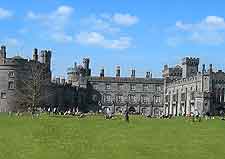
Kilkenny's rich history is easy to see, even today. The town boasts a myriad of heritage buildings and historic landmarks. Whilst most of these date back to the medieval era, Kilkenny is thought to have existed long before then.
To uncover Kilkenny's earliest origins, it is necessary to step back in time to the 6th century, when a monastic settlement was founded here. It was known as Cill Channigh, which is Gaelic for 'the Church of St. Canice'.
A Medieval Town
In the 12th century, a Norman invader named Richard de Clare (better known as Strongbow) built a wooden castle here. Later, the 2nd Earl of Pembroke, William Marshall, oversaw the construction of a stone castle on the site, along with defensive walls. Together, they presented a powerful symbol of Norman control over the town.
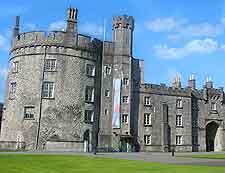
During the early 13th century, a Franciscan friary was also founded in Kilkenny. Known as St. Francis' Abbey, it is best known for one of its friars, John Clyn. Clyn wrote 'The Annals of Ireland', which gives an account of some of the most noteworthy events in the country. It includes his account of how the Black Death appeared in Ireland in 1348. According to Clyn, in Kilkenny itself, there was hardly a house not affected by the disease.
A few years earlier, Kilkenny had been at the centre of a landmark heresy trial in Ireland. In 1324, Alice Kyteler was accused of witchcraft by the Bishop of Ossory. Kyteler was tried for heresy - this was the first time that this had happened to a suspected sorcerer in Ireland. A woman of some wealth, she managed to evade the death penalty. However, one of her less well-off followers, Petronilla de Media, was not so lucky.
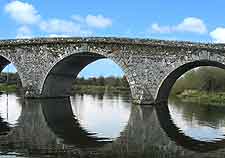
History of the 17th to 19th Centuries
In the 17th century, Kilkenny embraced a much more prosperous era. In 1609, it was granted city status. Then, in 1642, the Confederation of Kilkenny was founded. This parliament aimed to bring together Catholic resistance against English persecution. The Confederate's Supreme Council was based here and the General Assembly met in the city on several occasions. In January 1649, the Confederation was dissolved, ending the city's time in the political spotlight.
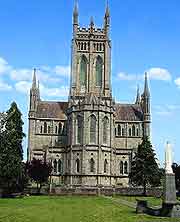
At this time, the woollen trade in Kilkenny employed many people. During the 17th century, local workers were involved in spinning, cloth washing, dyeing, weaving and tailoring. In the 18th century, the arrival of machinery marked the beginning of its eventual decline. Kilkenny was also involved in the brewing industry. Two breweries were in operation in the grounds of St. Francis' Abbey.
The 20th Century to the Present Day
From 1918, Ireland faced the problem of deciding who were its legitimate rulers - the British Government or Dáil Éireann. Kilkenny recognised the Dáil and, like many other local authorities in the country, encouraged its citizens not to cooperate with the British Government.
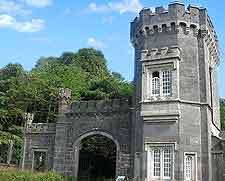
Kilkenny became caught up in the Irish War of Independence that followed in history. Two Irish Republican Army volunteers were killed in February 1921, when a planned ambush on British soldiers went wrong. A truce was finally agreed in July 1921.
In 1967, the ownership of Kilkenny Castle was handed over to its citizens, with the adjoining parkland made freely accessible to the public. Today, the city's residents and visitors enjoy a lively cultural scene. Many popular events are held here, including the Kilkenny Arts Festival and the Cat Laughs Comedy Festival.
 Kilkenny's rich history is easy to see, even today. The town boasts a myriad of heritage buildings and historic landmarks. Whilst most of these date back to the medieval era, Kilkenny is thought to have existed long before then.
Kilkenny's rich history is easy to see, even today. The town boasts a myriad of heritage buildings and historic landmarks. Whilst most of these date back to the medieval era, Kilkenny is thought to have existed long before then. During the early 13th century, a Franciscan friary was also founded in Kilkenny. Known as St. Francis' Abbey, it is best known for one of its friars, John Clyn. Clyn wrote 'The Annals of Ireland', which gives an account of some of the most noteworthy events in the country. It includes his account of how the Black Death appeared in Ireland in 1348. According to Clyn, in Kilkenny itself, there was hardly a house not affected by the disease.
During the early 13th century, a Franciscan friary was also founded in Kilkenny. Known as St. Francis' Abbey, it is best known for one of its friars, John Clyn. Clyn wrote 'The Annals of Ireland', which gives an account of some of the most noteworthy events in the country. It includes his account of how the Black Death appeared in Ireland in 1348. According to Clyn, in Kilkenny itself, there was hardly a house not affected by the disease.
 At this time, the woollen trade in Kilkenny employed many people. During the 17th century, local workers were involved in spinning, cloth washing, dyeing, weaving and tailoring. In the 18th century, the arrival of machinery marked the beginning of its eventual decline. Kilkenny was also involved in the brewing industry. Two breweries were in operation in the grounds of St. Francis' Abbey.
At this time, the woollen trade in Kilkenny employed many people. During the 17th century, local workers were involved in spinning, cloth washing, dyeing, weaving and tailoring. In the 18th century, the arrival of machinery marked the beginning of its eventual decline. Kilkenny was also involved in the brewing industry. Two breweries were in operation in the grounds of St. Francis' Abbey. Kilkenny became caught up in the Irish War of Independence that followed in history. Two Irish Republican Army volunteers were killed in February 1921, when a planned ambush on British soldiers went wrong. A truce was finally agreed in July 1921.
Kilkenny became caught up in the Irish War of Independence that followed in history. Two Irish Republican Army volunteers were killed in February 1921, when a planned ambush on British soldiers went wrong. A truce was finally agreed in July 1921.